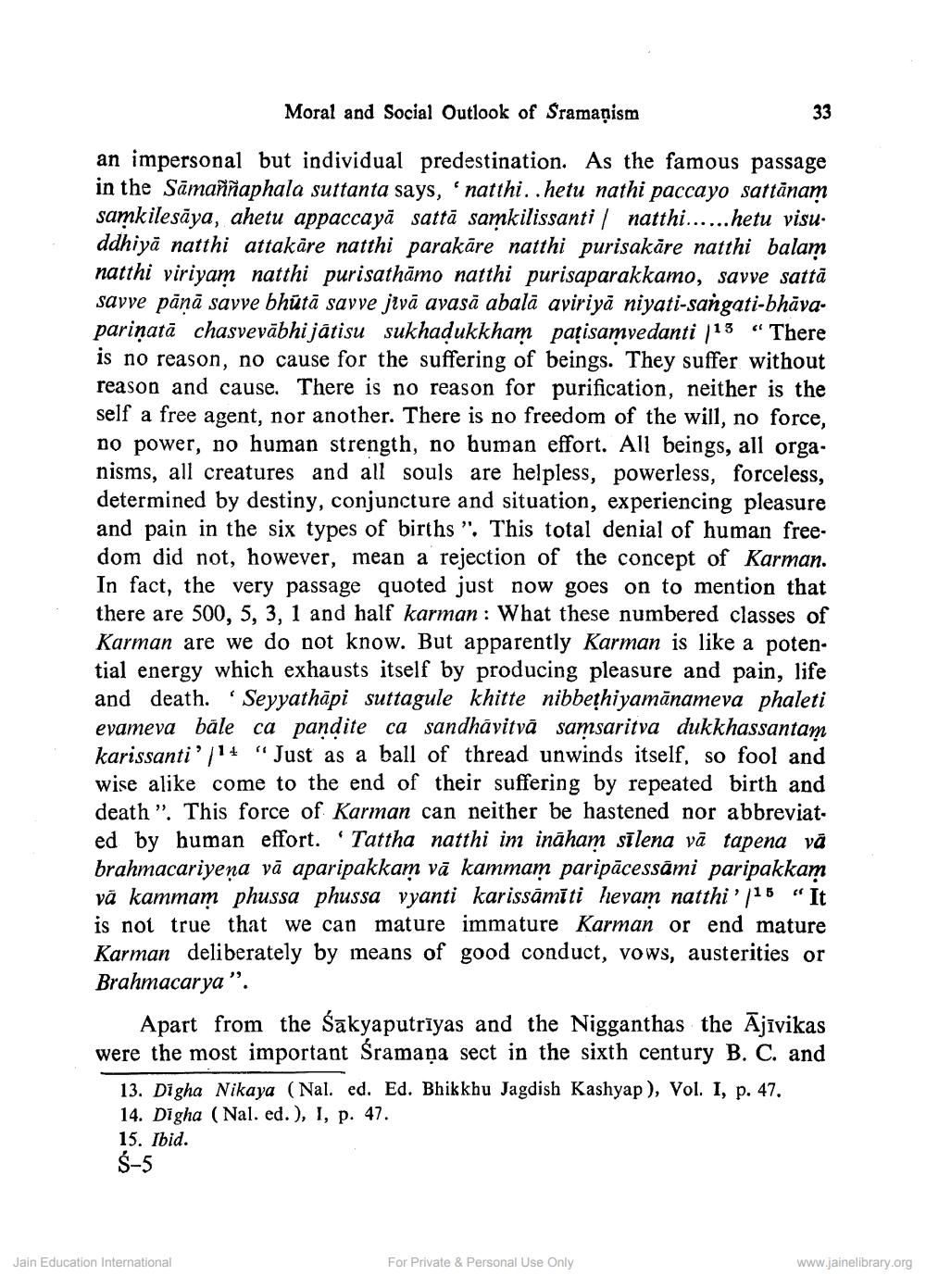________________
Moral and Social Outlook of Sramaņism
an impersonal but individual predestination. As the famous passage in the Sāmaññaphala suttanta says, 'natthi..hetu nathi paccayo sattānam samkilesāya, ahetu appaccayā sattā samkilissanti / natthi......hetu visu. ddhiyā natthi attakāre natthi parakāre natthi purisakāre natthi balam natthi viriyam natthi purisathāmo natthi purisaparakkamo, savve satta savve pānā savve bhūtā savve jivā avasā abalā aviriyā niyati-sangati-bhāvapariņatā chasvevābhi játisu sukhadukkham pațisamvedanti |13 “ There is no reason, no cause for the suffering of beings. They suffer without reason and cause. There is no reason for purification, neither is the self a free agent, nor another. There is no freedom of the will, no force, no power, no human strength, no human effort. All beings, all organisms, all creatures and all souls are helpless, powerless, forceless. determined by destiny, conjuncture and situation, experiencing pleasure and pain in the six types of births". This total denial of human freedom did not, however, mean a rejection of the concept of Karman. In fact, the very passage quoted just now goes on to mention that
are 500, 5, 3, 1 and half karman : What these numbered classes of Karman are we do not know. But apparently Karman is like a potential energy which exhausts itself by producing pleasure and pain, life and death. 'Seyyathāpi suttagule khitte nibbeshiyamānameva phaleti evameva bāle ca pandite ca sandhävitvā samsaritva dukkhassantam karissanti' 14" Just as a ball of thread unwinds itself, so fool and wise alike come to the end of their suffering by repeated birth and death". This force of Karman can neither be hastened nor abbreviated by human effort. 'Tattha natthi im ināham sīlena vā tapena vā brahmacariyena vā aparipakkam vā kammam paripācessāmi paripakkam vā kammam phussa phussa vyanti karissāmīti hevam natthi'/15 " It is not true that we can mature immature Karman or end mature Karman deliberately by means of good conduct, vows, austerities or Brahmacarya".
Apart from the sākyaputriyas and the Nigganthas the Ājīvikas were the most important Šramaņa sect in the sixth century B. C. and
13. Digha Nikaya (Nal. ed. Ed. Bhikkhu Jagdish Kashyap), Vol. I, p. 47, 14. Digha (Nal. ed.), I, p. 47. 15. Ibid. Ś-5
Jain Education International
For Private & Personal Use Only
www.jainelibrary.org




